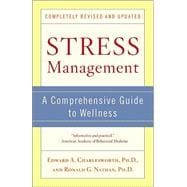
Note: Supplemental materials are not guaranteed with Rental or Used book purchases.
Purchase Benefits
What is included with this book?
| SECTION I Learning About Stress and Your Life | |||||
|
5 | (15) | |||
|
20 | (4) | |||
|
24 | (16) | |||
|
40 | (7) | |||
| SECTION II Relaxing Ways for a Stressful World | |||||
|
47 | (20) | |||
|
67 | (12) | |||
|
79 | (7) | |||
|
86 | (7) | |||
| SECTION III Overcoming Your Special Stressors | |||||
|
93 | (6) | |||
|
99 | (7) | |||
|
106 | (10) | |||
|
116 | (16) | |||
|
132 | (17) | |||
|
149 | (22) | |||
| SECTION IV Attacking Your Stressful Behaviors, Thoughts, and Attitudes | |||||
|
171 | (15) | |||
|
186 | (13) | |||
|
199 | (12) | |||
|
211 | (14) | |||
| SECTION V Communicating Your Needs and Feelings | |||||
|
225 | (9) | |||
|
234 | (17) | |||
| SECTION VI Planning the Days of Your Life | |||||
|
251 | (21) | |||
|
272 | (9) | |||
|
281 | (7) | |||
|
288 | (13) | |||
| SECTION VII Enhancing Health and Preventing Disease | |||||
|
301 | (27) | |||
|
328 | (27) | |||
| SECTION VIII Putting It All Together | |||||
|
355 | (11) | |||
|
366 | (13) | |||
| APPENDIX I Music for Stress Management | 379 | (4) | |||
| APPENDIX II A Guide to Self-Help Groups and Service Organizations | 383 | (8) | |||
| APPENDIX III Suggested Web Sites, Books, Recordings, and Other Resources | 391 | (16) | |||
| APPENDIX IV Home Practice Chart | 407 | (2) | |||
| INDEX | 409 |
The New copy of this book will include any supplemental materials advertised. Please check the title of the book to determine if it should include any access cards, study guides, lab manuals, CDs, etc.
The Used, Rental and eBook copies of this book are not guaranteed to include any supplemental materials. Typically, only the book itself is included. This is true even if the title states it includes any access cards, study guides, lab manuals, CDs, etc.
Excerpted from Stress Management: A Comprehensive Guide to Wellness by Ronald G. Nathan, Edward A. Charlesworth
All rights reserved by the original copyright owners. Excerpts are provided for display purposes only and may not be reproduced, reprinted or distributed without the written permission of the publisher.